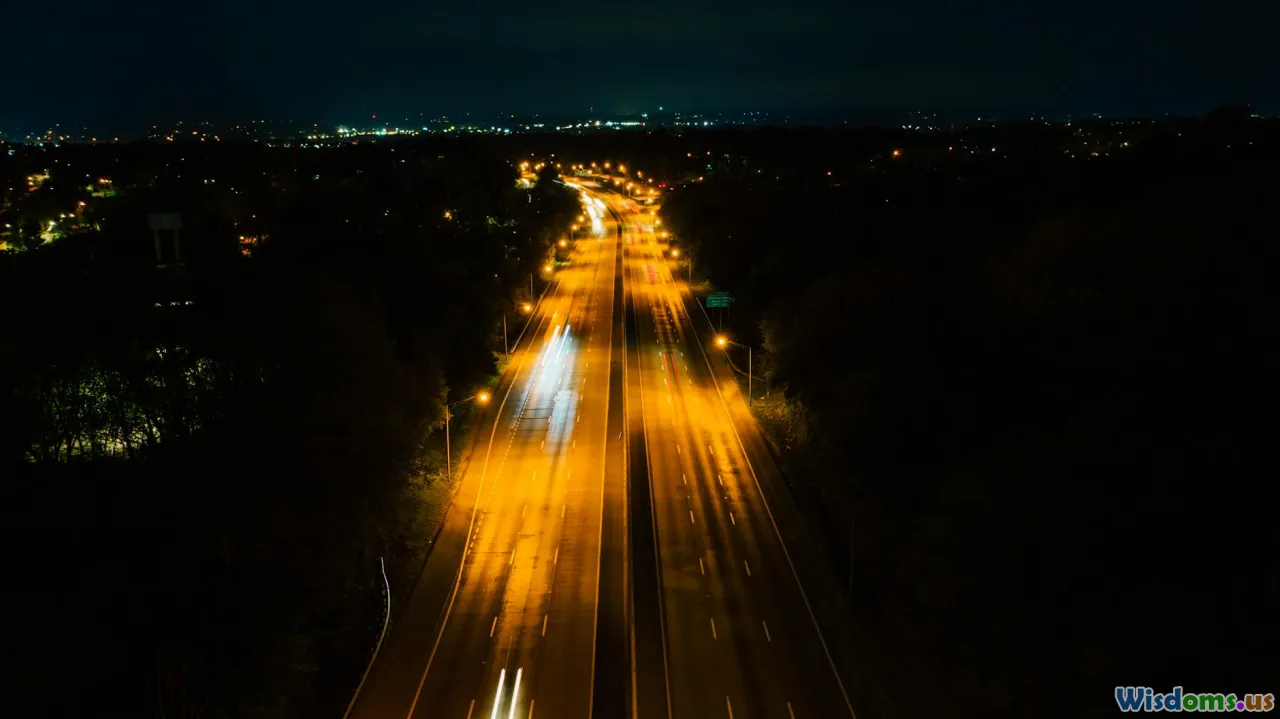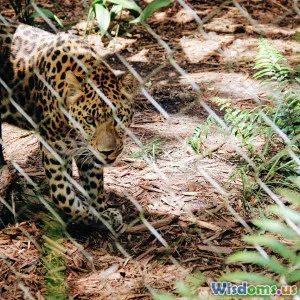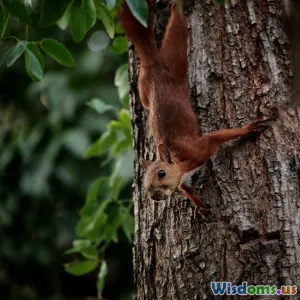
Why Migratory Birds Now Avoid Major Highways
17 min read Discover why migratory birds are changing their flight paths to avoid major highways, backed by science and recent observations. (0 Reviews)
Why Migratory Birds Now Avoid Major Highways
Spring skies once shimmered with streams of geese, warblers, and swallows passing overhead, struggling between continents in harmony with Earth’s magnetic script. Yet if you train your binoculars on landscapes adjacent to our busiest highways, something remarkable is unfolding: fewer birds, lighter traffic in nature’s aerial lanes. The world changes swiftly, and migratory birds are adapting, detouring away from where rumbling engines and sprawling infrastructure cut through their ancient skyways. What’s behind this subtle yet consequential shift? Exploring the recent avoidance of major highways by migratory flocks unravels a fascinating tale about animal intelligence, urban development, and the promise of peaceful coexistence.
Changing Flight Paths in a Modern World

For centuries, migratory birds charted their routes by river valleys, coastlines, and mountains. But a growing body of research reveals a dramatic re-mapping as birds reroute, often veering wide of busy motorways. The phenomenon spans continents—from North America’s sprawling freeways to the high-speed autobahns of Europe—underlining a global behavioral recalibration.
A 2022 study spearheaded by the Cornell Lab of Ornithology, using radar tracking and satellite GPS tags, found that many species now purposefully shape their paths to reduce time spent flying parallel or near major highways. The Eastern Bluebird, for instance, now detours around sections of the Interstate 95 corridor during its spring migration—sometimes adding miles to its journey. Ornithologists believe this response reflects both learned behavior (passed through flocks) and evolving instinct, shaped within a lifetime and over generations by risks encountered.
The complexity of highway avoidance isn’t uniform. Songbirds and raptors exhibit more pronounced detours, while some waterfowl, less threatened by urban encroachment thanks to open wetlands, display less sensitivity. Ecologists compare these shifts to urban foxes altering their hunting zones or dolphins skirting noisy shipping channels, underscoring adaptive intelligence.
The Impact of Highway Noise and Light Pollution

Roadways are not just lines on the land—they pulse with noise and light, and for birds with delicate navigational senses, these disruptions are formidable.
Auditory Disturbances
The constant hum of engines, staccato horns, and explosive tire bursts interfere with birds’ communication. Many species use vocal signals to remain in cohesion during flight or warn of predators. Researchers from the University of Sheffield showed in controlled field studies that highway noise can disrupt contact calls among European Starlings, leading to greater flock fragmentation. Over time, repeated disturbances discourage birds from migrating along noisy corridors.
Nighttime Light Pollution
Migration for many birds is a nocturnal event, using stars for guidance. Unfortunately, roadways cut ribbons of artificial luminescence twenty-four hours a day, obscuring these celestial markers. According to the Dark Sky Initiative, regions with major highways witnessed a decline of up to 40% in the density of night-flying birds in the last decade—a sharp contrast to rural routes. The famous spring warbler migration past Houston, Texas, now peaks further west, away from the city’s luminous highways, as studies using weather radar show.
These factors combine to create what ecologists call an ecological “barrier belt,” repelling flocks and nudging evolution’s hand towards detours, and sometimes, confusion and peril for young, inexperienced birds.
Collisions: A Hidden Toll on Avian Populations

Besides noise and brightness, highways pose another immediate risk: lethal collisions.
The Federal Highway Administration in the U.S. estimates that more than 350 million birds are killed annually in North America alone by vehicles. Often, migratory birds descend to feed or rest near grassy highway medians and are struck as they attempt to take off—gulls, pigeons, and even hawks have suffered these fates.
A breakthrough 2019 study by the British Trust for Ornithology mapped so-called “collision hotspots” along the M1 and M25 highways, uncovering an unequal risk: areas near rest stops and artificial ponds drew higher bird densities, as did highway segments aligned with migratory flyways. The carnage not only depletes local populations but may supercharge learned avoidance—surviving flocks alter their navigation, telegraphing danger to coming generations.
To put the toll in perspective: the cumulative lifetime reproduction lost to highway collisions in the Northern Lapwing population across England has led to a 7% reduction in their local breeding numbers. Road ecology researchers point to these casualties as a key driver behind not only direct avoidance, but the broader avian reflux from transport corridors.
The Subtle Influence of Heat and Air Pollution

Highways create microclimates—a concept sometimes overlooked. Dark asphalt absorbs and radiates heat, producing shimmering "heat islands" that impact flight.
Temperature Extremes
Thermal updrafts from sunbaked roads can disorient species that rely on steady air currents for migration. Swallows, known for their agile maneuvering, often avoid crossing highways during the day because of turbulent gusts and thermal distortions causing energy-draining corrections. In a study along the Madrid ring road, Spanish researchers recorded nearly zero daytime crossings by Sand Martins during heatwaves.
Air Quality Concerns
Vehicle exhaust emissions concentrate above and beside major highways, producing localized spikes in particulate matter and ozone. These pollutants inflame respiratory systems and impair the oxygen-carrying efficiency of birds—a process already stressed during their long flights. Tracking data from Swedish White Storks showed reduced resting time and abrupt course corrections after encountering roadside pollution clouds—clear evidence that exposure is enough to drive rerouting behavior.
Poor air quality, in turn, may force entire populations to shift routes over time, snaking around “dirty” landscapes and, in aggregate, creating new migration maps.
Landscape Fragmentation and Loss of Stopover Habitats

For a migratory bird, a safe place to stop, rest, and feed can mean the difference between life and death. Yet highways, especially the vast, multifaceted interchanges spinning from major cities, have fragmented prime stopover real estate.
Shrinking Feeding and Roosting Spaces
The rapid expansion of highways through wetlands, forests, and grasslands has directly removed or degraded habitats crucial to weary travelers like the Blackpoll Warbler or Willow Flycatcher. Hardy roadside shrubs simply don’t stack up against the nutritional richness and protection of old woodlots or natural meadows that often stood where construction now sprawls.
The League of Conservation Biologists found in 2021 that sections of Interstate 80 in the Midwest that bisected prime prairie stopover sites corresponded to a 60% reduction in recorded bird resting flocks within a 3 km radius post-construction—a displaced multitude forced to find less ideal, farther-off oases.
Navigational Bottlenecks
Beyond outright loss, highways lace the land with fences, embankments, bridges, lighting, and other barriers. The “barrier effect” doesn’t just slow passage; it creates hazardous bottlenecks where birds must funnel through remaining gaps, heightening their predation risk and causing crowding at depleted resources. Migration, once a wide corridor, becomes a tense sprint through shrinking windows.
Innovation: How Birds Learn to Adapt and Avoid

While highway-driven changes initially spell trouble, birds have displayed remarkable flexibility—learning and innovating to keep their migrations viable.
Social Learning and Memory
Fieldwork in Switzerland with tagged Eurasian Cranes demonstrated that individuals who survived dangerous crossings in youth later guided whole flocks along safer detours, illustrating collective learning in action. Groups seem to retain a sort of ‘cultural map’ of safe passages, reinforced by real-time communication en route.
Genetic Selection in Motion
Over years, natural selection starts to reinforce wariness towards highways. Ecological geneticists at University of Groningen, Netherlands, examining migrating Black-tailed Godwits, identified rapid changes in the expression of certain stress-response genes—birds genetically inclined to avoid noisy or unpredictable habitats fared better and had more offspring.
Real-Wave Navigation and Real-Time Data
With satellites now tracking thousands of migrants, new evidence suggests birds employ ongoing ‘real-world’ data in their travel, tweaking plans mid-flight. Flocks climbing higher altitudes to pass noisy cities or using mixed urban-rural routes demonstrate continual adaptation in decision-making, echoing the very latest news from their own kind and their own experiences.
Highway Solutions: Can Infrastructure and Wildlife Coexist?

Birds aren’t solely responsible for ensuring their survival. Human innovation and wildlife-sensitive infrastructure redesigns are opening possibilities for coexistence.
Building Bird-Friendly Highways
European countries are pioneering wildlife overpasses—planted green bridges spanning roads—often covered with native shrubs and trees to provide safe crossing points for all fauna, including birds. Over 600 such “Ecoducts” have been deployed in the Netherlands with early studies indicating increased migratory traffic across these segments within five years of installation.
Dimming the Lights
Houston’s “Lights Out” initiative requires businesses to dim non-essential building lights during peak migration weeks, slashing night-time disorientation for birds. Highways outfitted with smart lighting—systems that dim based on traffic levels—help restore the stars as navigational anchors, a pragmatic, cost-effective fix.
Urban Greening and Sound Barriers
Planting tall roadside vegetation and installing noise-reducing walls buffer birds from perilous noise and help break up the monotony of tarmac with ecological rest stops. Pilot projects along the A6 near Munich saw an increase in both the diversity and abundance of presiding birds a few years after installation.
Advocacy and Policy
Policy measures—like the U.S. Migratory Bird Treaty Act or Canada’s protected migratory corridors—encourage mapping, signage, and environmental impact assessments before new highway construction. BirdLife International’s “Safe Flyways” initiative unites policymakers and engineers to design routes with the needs of aerial migrants in mind.
What Can Individuals Do?

Tackling a challenge on the scale of global migration requires both top-down and grassroots solutions. While governments and NGOs set policy and redesign landscapes, individuals play a crucial role in bird safety.
- Participate in Citizen Science: Join local wildlife surveys—recording migration timings, reporting road casualties, or tagging sightings through platforms like eBird helps scientists track evolving migration responses.
- Advocate for Change: Support initiatives aimed at safer highways, like reduced speed limits in known bird corridors during migration seasons or municipal movement towards smarter, wildlife-friendly lighting.
- Landscape Thoughtfully: In areas close to highways, plant native trees and shrubs that sustain and protect passing migrants. Even small habitat pockets can make a big difference.
- Educate and Share: Raise public awareness about migratory birds’ challenges via social media, community talks, or signage at local rest stops.
Looking Ahead: The Future of Migration in a Connected World
As we accelerate our own journeys on paved ribbons of connectivity, the skies above remind us that nature adapts—but not always without cost. Birds have begun avoiding major highways not due to whimsy, but because of a complex stew of danger, fragmentation, and opportunity gleaned and transmitted by generations of survivors. Fortunately, our capacity for innovation equals theirs.
By understanding how, why, and where this avoidance unfolds—and embedding the lessons in infrastructure design, policy, and daily stewardship—we can foster a landscape where both wheels and wings move freely. The maps of the future are being redrawn, above all, by our willingness to share the route. As each migration season brings departures anew, hope soars that safe passage will remain a possibility for the extraordinary travelers above.
Rate the Post
User Reviews
Other posts in Human Impact on Wildlife
Popular Posts














